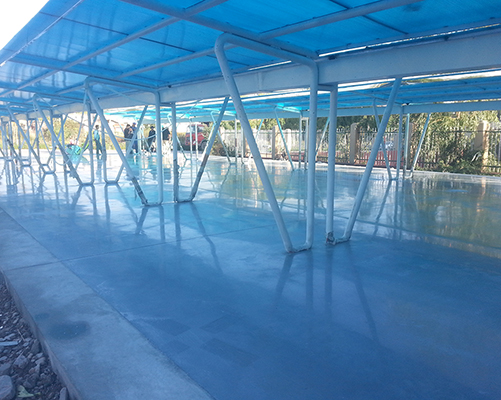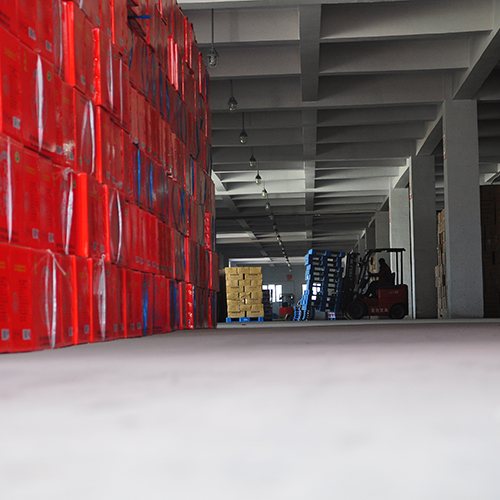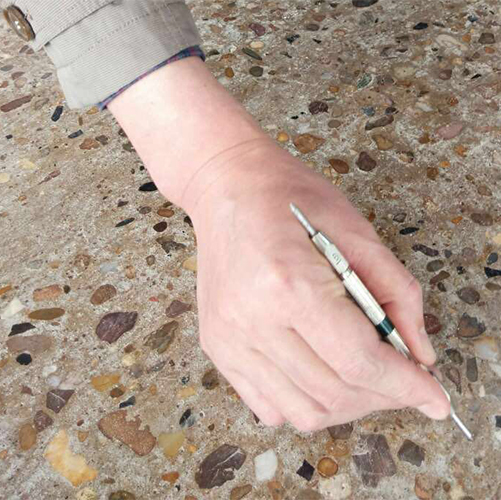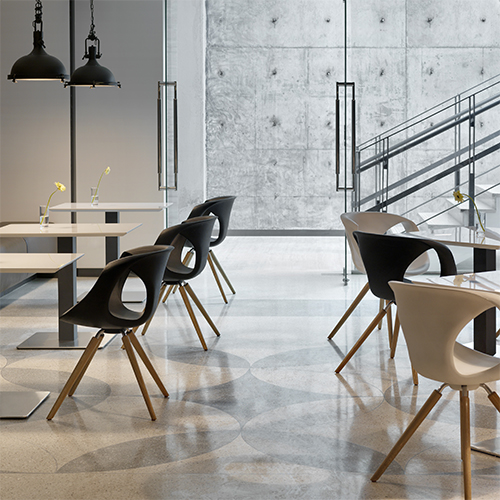Triaxis Hard-Coat Materials
Triaxis Hard-Coat Materials are comprised of non-metallic aggregate, low-alkali cement, microsilica, mineral admixture, alkali-free water reducer, specialized polymers, and inorganic pigmentation. The product is available in standard (H-1) and non-Fire (H-2) varieties, and in non-pigmented or green coloration – further customizable per client demand for a fully bespoke floor surfacing solution. On completion of labor, it is recommended that the surface is treated with Triaxis LS-1 sealing agent, which improves surface durability, moisture impermeability, and gloss on application of lapping and polishing procedures. As the surfacing material is free of alkali or alkali-reactive aggregates, subsequent floor surfacing procedures and treatments will not provoke alkaline reactivity – permitting longer service life.
Triaxis H-1 Hardcoat (Standard)

Triaxis H-2 Hardcoat(Non-Fire)

【Product Features】:
Ready to use on mixing.
Friction-resistant and impact resistant.
High surface density prevents staining.
【Primary Uses】:
Recommended Usage Venues: Factory spaces, machine floors, warehouses, parking lots, basements, storage rooms, repair centers, loading bays, outdoor corridors.
【Usage Quantities】:
Low Application: Suited to low-activity work environments and pedestrian traffic. 3 to 4 kg per square meter.
Medium Application: Suited to moderate thoroughfare, and standard vehicular tires. 4 to 5 kg per square meter.
High Application: Suited to high-volume thoroughfare, and metallic wheels. 5 to 6 kg per square meter.
【Usage Provisions】:
1. Work should not proceed if environmental temperatures fall below 5°C.
2. The compressive strength class of underlying concrete should exceed C25.
3. Surfacing concrete should be laid with expansion joints. To prevent fracturing by expansion and contraction, joint spacing should not exceed 5 meters.
4. Irregularities that emerge in pouring generally come of air entrainment and concrete expansion.
5. In the pouring of surfacing concrete, it is best to apply vibration with use of a plate compactor.
6. When the surface is capable of bearing pedestrian traffic, water curing or the application of curing agents may proceed.
【Packaging & Storage】:
Moisture barrier packaging, with a volume of 25 kg per sack.
If left sealed within its original packaging and stored in a dry environment, the product bears an effective shelf-life of 3 months.
Stacking should not exceed 10 packages. If stacking is necessary, packages should be individually shaken with regularity to prevent setting.




